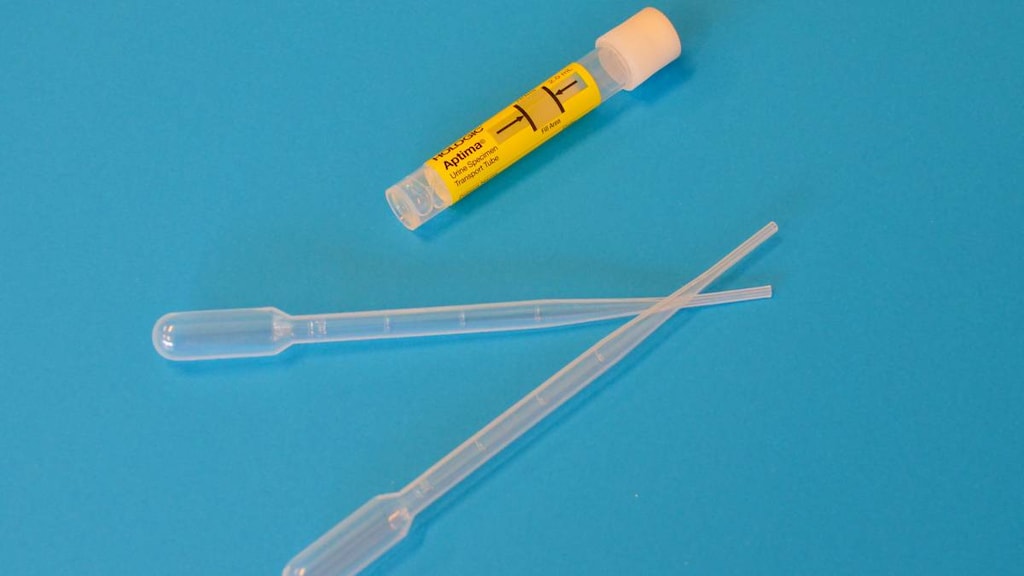Dosage Forms
Excipient information presented when available (limited, particularly for generics); consult specific product labeling. [DSC] = Discontinued product
Solution, Intravenous [preservative free]:
Azactam in Dextrose: 1 g/50 mL (50 mL [DSC]); 2 g/50 mL (50 mL [DSC]) [sodium free]
Solution Reconstituted, Injection [preservative free]:
Azactam: 1 g (1 ea); 2 g (1 ea) [sodium free]
Generic: 1 g (1 ea); 2 g (1 ea)
Pharmacology
Mechanism of Action
Inhibits bacterial cell wall synthesis by binding to one or more of the penicillin-binding proteins (PBPs) which in turn inhibits the final transpeptidation step of peptidoglycan synthesis in bacterial cell walls, thus inhibiting cell wall biosynthesis. Bacteria eventually lyse due to ongoing activity of cell wall autolytic enzymes (autolysins and murein hydrolases) while cell wall assembly is arrested. Monobactam structure makes cross-allergenicity with beta-lactams unlikely.
Pharmacokinetics/Pharmacodynamics
Absorption
IM: Well absorbed; IM and IV doses produce comparable serum concentrations
Distribution
Widely into body tissues, cerebrospinal fluid, bronchial secretions, peritoneal fluid, bile, and bone
Vd: Neonates: 0.26 to 0.36 L/kg; Children: 0.2 to 0.29 L/kg; Adults: 0.15 to 0.18 L/kg (Brogden 1986)
Relative diffusion of antimicrobial agents from blood into CSF: Good only with inflammation (exceeds usual MICs)
CSF:blood level ratio: Meninges: Inflamed: 8% to 40%; Normal: ~1%
Metabolism
Hepatic (minor %)
Excretion
Urine (60% to 70% as unchanged drug); feces (~12%)
Time to Peak
IM: Within 60 minutes (Mattie 1988)
Half-Life Elimination
Neonates: <7 days, ≤2.5 kg: 5.5 to 9.9 hours; <7 days, >2.5 kg: 2.6 hours; 1 week to 1 month: 2.4 hours
Children 2 months to 12 years: 1.7 hours
Children with cystic fibrosis: 1.3 hours
Adults: Normal renal function: 1.5 to 2 hours
End-stage renal disease: 6 to 8.4 hours (Brogden 1986)
Protein Binding
56%
Use in Specific Populations
Special Populations: Renal Function Impairment
Serum half-life is prolonged.
Use: Labeled Indications
Treatment of patients with urinary tract infections, lower respiratory tract infections, septicemia, skin/skin structure infections, intra-abdominal infections, and gynecological infections caused by susceptible gram-negative bacilli
Use: Off Label
Meningitis, bacterialyes
Based on the Infectious Diseases Society of America (IDSA) guidelines for the management of bacterial meningitis and health care-associated ventriculitis and meningitis, aztreonam is an effective and recommended alternative therapy for meningitis due to beta-lactamase positive Haemophilus influenzae, Enterobacteriaceae, or Pseudomonas aeruginosa, and for health care-associated meningitis or ventriculitis requiring empiric therapy for gram-negative pathogens in patients with anaphylaxis to beta-lactams, in combination with other appropriate agents.
Osteomyelitis, native vertebralyes
Based on the Infectious Diseases Society of America (IDSA) guidelines for the diagnosis and treatment of native vertebral osteomyelitis in adults, aztreonam is an effective and recommended alternative treatment option for the treatment of native vertebral osteomyelitis due to Pseudomonas aeruginosa in patients with severe penicillin allergy and quinolone-resistant strains.
Surgical prophylaxis (perioperative)yes
Based on the American Society of Health-System Pharmacists (ASHP), the Infectious Diseases Society of America (IDSA), the Surgical Infection Society (SIS), and the Society of Healthcare Epidemiology of America (SHEA) guidelines for antimicrobial prophylaxis in surgery, aztreonam is an effective and recommended alternative agent (in combination with other antibiotics) for patients with beta-lactam allergy for a number of surgical procedures (eg, gastroduodenal, biliary tract, appendectomy, hysterectomy, urologic involving implanted prosthesis, liver transplantation, or pancreas and pancreas-kidney transplantation) and may be used first-line in combination with cefazolin for procedures involving implanted prosthetic material (eg, penile prosthesis).
Contraindications
Hypersensitivity to aztreonam or any component of the formulation
Dosage and Administration
Dosing: Adult
Urinary tract infection: IM, IV: 500 mg to 1 g every 8 to 12 hours; maximum: 8 g/day
Moderately severe systemic infections: 1 g IV or IM or 2 g IV every 8 to 12 hours; maximum: 8 g/day. Note: IV route preferred for septicemia, intra-abdominal abscess, or peritonitis; higher doses (8 to 12 g/day) may be needed for patients with cystic fibrosis (Zobell 2013).
Severe systemic or life-threatening infections (eg, Pseudomonas aeruginosa): IV: 2 g every 6 to 8 hours; maximum: 8 g/day. Note: Higher doses (8 to 12 g/day) may be needed for patients with cystic fibrosis (Zobell 2013).
Meningitis, bacterial (community-acquired or health care-associated) (alternative agent) (off-label use): As a component of empiric therapy for health care-associated infection or pathogen-specific therapy (eg, Haemophilus influenzae (beta-lactamase positive), Enterobacteriaceae or Pseudomonas aeruginosa): IV: 2 g every 6 to 8 hours; for empiric therapy, must be used in combination with other appropriate agents (IDSA [Tunkel 2004; Tunkel 2017])
Osteomyelitis, native vertebral due to P. aeruginosa (off-label use): IV: 2 g every 8 hours for 6 weeks. Note: Double coverage may be considered (ie, aztreonam plus an aminoglycoside) (IDSA [Berbari 2015])
Pneumonia, hospital-acquired or ventilator-associated (alternative therapy) (off-label dose): IV: 2 g every 8 hours for 7 days; may consider shorter or longer durations depending on rate of clinical improvement. When used as empiric therapy, use in combination with an agent active against Staphylococcus aureus with or without an additional antipseudomonal agent (dependent on patient and institution-specific risk factors) (Kalil 2016).
Surgical (perioperative) prophylaxis (off-label use): IV: 2 g within 60 minutes prior to surgery. Doses may be repeated in 4 hours if procedure is lengthy or if there is excessive blood loss (Bratzler 2013).
Dosing: Geriatric
Refer to adult dosing.
Dosing: Pediatric
General dosing, susceptible infection: Infants, Children, and Adolescents (Red Book [AAP 2015]):
Mild to moderate infection: IM, IV: 90 mg/kg/day in divided doses every 8 hours; maximum daily dose: 3,000 mg/day
Severe infection: IM, IV: 90 to 120 mg/kg/day in divided doses every 6 to 8 hours; maximum daily dose: 8 g/day
Cystic fibrosis (Pseudomonas aeruginosa): Infants, Children, and Adolescents: IV: 150 to 200 mg/kg/day in divided doses every 6 to 8 hours (Kliegman 2016); higher doses have been used: 200 to 300 mg/kg/day divided every 6 hours; maximum daily dose: 12 g/day (Zobell 2012)
Intra-abdominal infections, complicated: Infants, Children, and Adolescents: IV: 90 to 120 mg/kg/day divided every 6 to 8 hours in combination with metronidazole; maximum dose: 2,000 mg (Solomkin 2010)
Peritonitis (peritoneal dialysis), treatment: Infants, Children, and Adolescents: Intraperitoneal: Continuous: Loading dose: 1,000 mg per liter of dialysate; maintenance dose: 250 mg per liter (ISPD [Warady 2012])
Surgical prophylaxis: Children and Adolescents: IV: 30 mg/kg within 60 minutes before procedure; may repeat in 4 hours for prolonged procedure or excessive blood loss; maximum dose: 2,000 mg (Bratzler 2013)
Reconstitution
IM: Reconstitute vial with at least 3 mL SWFI, sterile bacteriostatic water for injection, NS, or bacteriostatic sodium chloride per gram of aztreonam; immediately shake vigorously.
IV:
Bolus injection: Reconstitute vial with 6 mL to 10 mL SWFI; immediately shake vigorously.
Infusion: Reconstitute vial with at least 3 mL SWFI per gram of aztreonam; immediately shake vigorously. Reconstituted solutions are colorless to light yellow straw and may turn pink upon standing without affecting potency. Further dilute in an appropriate solution for infusion (eg, D5W, NS) to a final concentration ≤2% (ie, final concentration should not exceed 20 mg/mL).
Administration
Injection: Doses >1 g should be administered IV
IM: Administer by deep injection into large muscle mass, such as upper outer quadrant of gluteus maximus or the lateral part of the thigh
IV: Administer by slow IV push over 3 to 5 minutes or by intermittent infusion over 20 to 60 minutes.
Storage
Vials: Prior to reconstitution, store at room temperature; avoid excessive heat. After reconstitution, solutions for infusion in D5W, LR, NS, or other appropriate solution, with a final concentration of ≤20 mg/mL, should be used within 48 hours if stored at room temperature or within 7 days if refrigerated. Solutions for infusion with a final concentration of >20 mg/mL (if prepared with SWFI or NS only) should also be used within 48 hours if stored at room temperature or within 7 days if refrigerated; all other solutions for infusion with a final concentration >20 mg/mL must be used immediately after preparation (unless prepared with SWFI or NS).
Premixed frozen containers: Store unused container frozen at ≤-20°C (-4°F). Frozen container can be thawed at room temperature of 25°C (77°F) or in a refrigerator, 2°C to 8°C (36°F to 46°F). Thawed solution should be used within 48 hours if stored at room temperature or within 14 days if stored under refrigeration. Do not freeze.
Drug Interactions
BCG (Intravesical): Antibiotics may diminish the therapeutic effect of BCG (Intravesical). Avoid combination
BCG Vaccine (Immunization): Antibiotics may diminish the therapeutic effect of BCG Vaccine (Immunization). Monitor therapy
Cholera Vaccine: Antibiotics may diminish the therapeutic effect of Cholera Vaccine. Management: Avoid cholera vaccine in patients receiving systemic antibiotics, and within 14 days following the use of oral or parenteral antibiotics. Avoid combination
Lactobacillus and Estriol: Antibiotics may diminish the therapeutic effect of Lactobacillus and Estriol. Monitor therapy
Sodium Picosulfate: Antibiotics may diminish the therapeutic effect of Sodium Picosulfate. Management: Consider using an alternative product for bowel cleansing prior to a colonoscopy in patients who have recently used or are concurrently using an antibiotic. Consider therapy modification
Typhoid Vaccine: Antibiotics may diminish the therapeutic effect of Typhoid Vaccine. Only the live attenuated Ty21a strain is affected. Management: Vaccination with live attenuated typhoid vaccine (Ty21a) should be avoided in patients being treated with systemic antibacterial agents. Use of this vaccine should be postponed until at least 3 days after cessation of antibacterial agents. Consider therapy modification
Test Interactions
May interfere with urine glucose tests containing cupric sulfate (Benedict's solution, Clinitest); positive Coombs' test
Adverse Reactions
>10%:
Hematologic & oncologic: Neutropenia (children 3% to 11%; adults <1%)
Hepatic: Increased serum transaminases (children, high dose: >3 times ULN: 15% to 20%; children, standard dose: increased serum AST 4%, increased serum ALT 7%)
Local: Pain at injection site (children 12%, adults 2%)
1% to 10%:
Cardiovascular: Phlebitis (intravenous: ≤2%), thrombophlebitis (intravenous: ≤2%)
Dermatologic: Skin rash (children 4%, adults ≤1%)
Gastrointestinal: Diarrhea (≤1%), nausea (≤1%), vomiting (≤1%)
Hematologic & oncologic: Eosinophilia (children 6%, adults <1%), thrombocythemia (children 4%, adults <1%)
Local: Erythema at injection site (intravenous: Children 3%, adults <1%), discomfort at injection site (intramuscular: ≤2%), swelling at injection site (intramuscular: ≤2%)
Renal: Increased serum creatinine (children 6%)
Miscellaneous: Fever (≤1%)
<1%, postmarketing, and/or case reports: Abdominal cramps, anaphylaxis, anemia, angioedema, breast tenderness, bronchospasm, chest pain, Clostridioides (formerly Clostridium) difficile-associated diarrhea, confusion, diaphoresis, diplopia, dizziness, dysgeusia, dyspnea, erythema multiforme, exfoliative dermatitis, flushing, gastrointestinal hemorrhage, halitosis, headache, hepatitis, hepatobiliary disease, hypotension, increased serum alkaline phosphatase, increased serum ALT (adults), increased serum AST (adults), induration at injection site, insomnia, jaundice, leukocytosis, malaise, myalgia, nasal congestion, numbness of tongue, oral mucosa ulcer, pancytopenia, paresthesia, petechia, positive direct Coombs test, prolonged partial thromboplastin time, prolonged prothrombin time, pruritus, pseudomembranous colitis, purpura, seizure, sneezing, thrombocytopenia, tinnitus, toxic epidermal necrolysis, urticaria, vaginitis, ventricular bigeminy (transient), ventricular premature contractions (transient), vertigo, vulvovaginal candidiasis, weakness, wheezing
Warnings/Precautions
Concerns related to adverse effects:
- Beta-lactam allergy: Rare cross-allergenicity to penicillins, cephalosporins, or carbapenems may occur; use with caution in patients with a history of hypersensitivity to beta-lactams.
- Superinfection: Prolonged use may result in fungal or bacterial superinfection, including C. difficile-associated diarrhea (CDAD) and pseudomembranous colitis; CDAD has been observed >2 months postantibiotic treatment.
Disease-related concerns:
- Renal impairment: Use with caution in patients with renal impairment; dosing adjustment required.
Concurrent drug therapy issues:
- Drug-drug interactions: Potentially significant interactions may exist, requiring dose or frequency adjustment, additional monitoring, and/or selection of alternative therapy. Consult drug interactions database for more detailed information.
Special populations:
- Bone marrow transplantation: Use with caution in bone marrow transplant patients with multiple risk factors for toxic epidermal necrolysis (TEN) (eg, sepsis, radiation therapy, drugs known to cause TEN); rare cases of TEN in this population have been reported.
Monitoring Parameters
Periodic renal and hepatic function tests; monitor for signs of anaphylaxis during first dose
Pregnancy
Pregnancy Risk Factor
B
Pregnancy Considerations
Aztreonam crosses the placenta and can be detected in the fetus.
Information related to aztreonam for the treatment of urinary tract infections in pregnancy is limited. Use may be considered in pregnant patients allergic to preferred antibiotics (Glaser 2015; Jolley 2010).
Patient Education
What is this drug used for?
- It is used to treat or prevent bacterial infections.
Frequently reported side effects of this drug
- Diarrhea
- Injection site pain
Other side effects of this drug: Talk with your doctor right away if you have any of these signs of:
- Clostridium difficile (C. diff)-associated diarrhea like abdominal pain or cramps, severe diarrhea or watery stools, or bloody stools.
- Stevens-Johnson syndrome/toxic epidermal necrolysis like red, swollen, blistered, or peeling skin (with or without fever); red or irritated eyes; or sores in mouth, throat, nose, or eyes.
- Signs of a significant reaction like wheezing; chest tightness; fever; itching; bad cough; blue skin color; seizures; or swelling of face, lips, tongue, or throat.
Note: This is not a comprehensive list of all side effects. Talk to your doctor if you have questions.
Consumer Information Use and Disclaimer: This information should not be used to decide whether or not to take this medicine or any other medicine. Only the healthcare provider has the knowledge and training to decide which medicines are right for a specific patient. This information does not endorse any medicine as safe, effective, or approved for treating any patient or health condition. This is only a brief summary of general information about this medicine. It does NOT include all information about the possible uses, directions, warnings, precautions, interactions, adverse effects, or risks that may apply to this medicine. This information is not specific medical advice and does not replace information you receive from the healthcare provider. You must talk with the healthcare provider for complete information about the risks and benefits of using this medicine.




